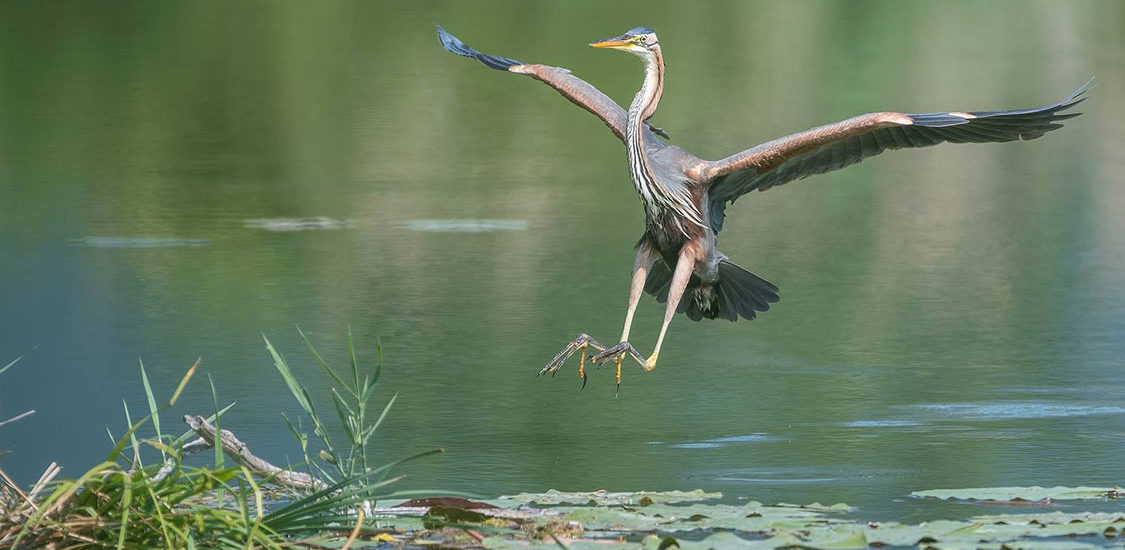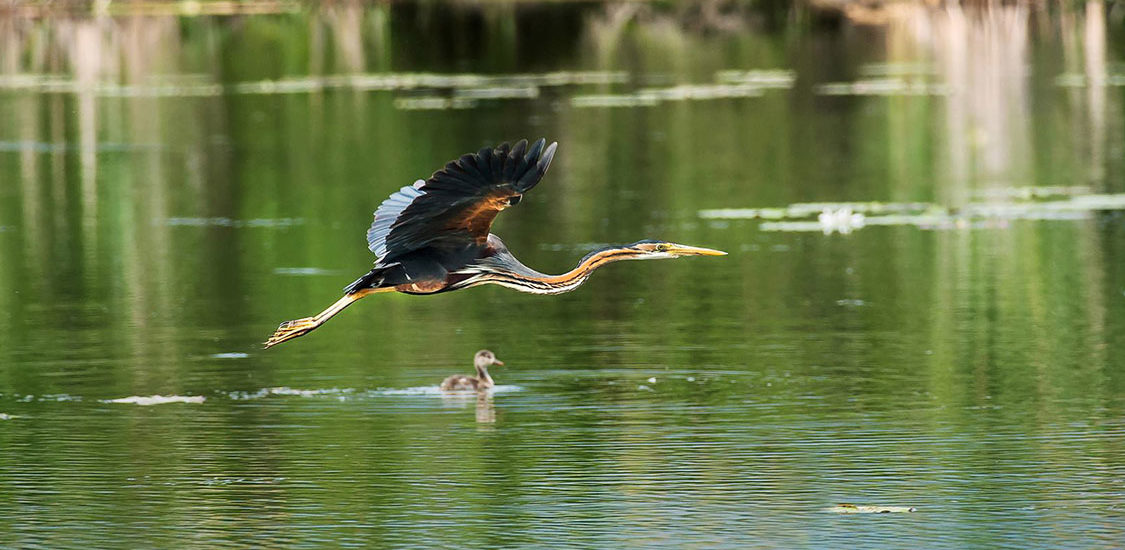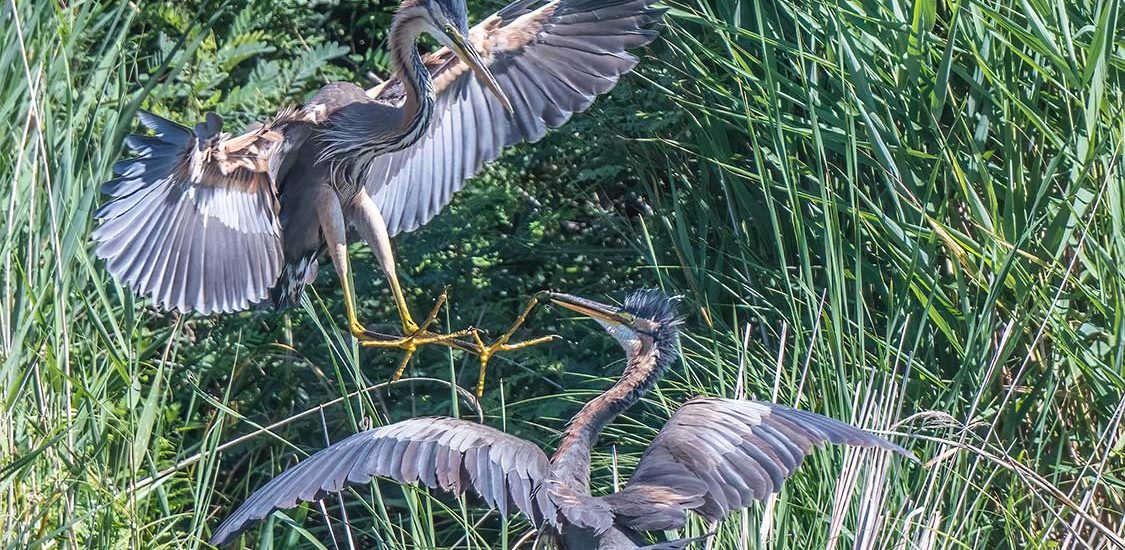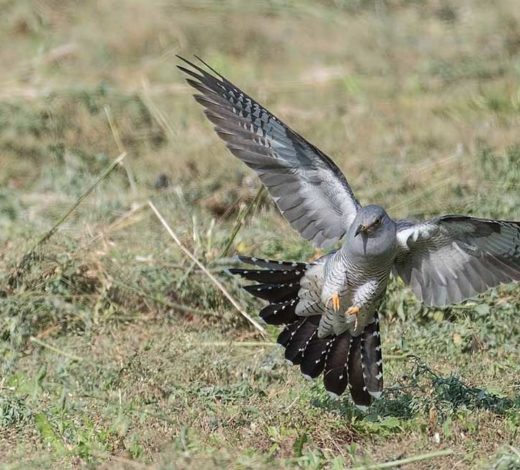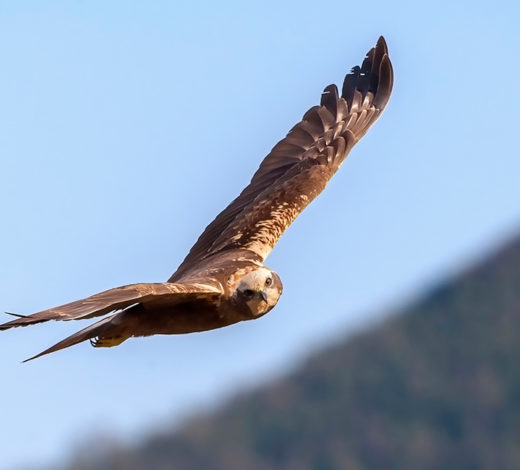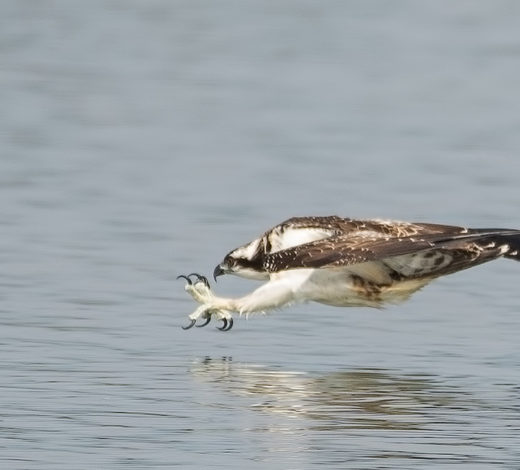Purple Heron
(Ardea purpurea)
Normally silent, these birds become more talkative during the reproductive period.
Description
A heron with a slender body, very long toes, beak, and thin neck. The upper body of adults is slate grey, while the lower body is reddish-chestnut. Their necks are reddish-brown with black stripes and the top of the head is adorned with two threadlike feathers. The sexes are similar. During flight, they have a very angular neck that marks out a larger, lower curve compared to the grey heron. They feed on various aquatic animals, such as fish, insects and small mammals, which they capture by piercing them with their sharp beaks while lying in wait or walking in the shallow water. They have a typically ‘serpentine’ appearance when roosting. Total length: 78–90 cm. Wingspan: 120–150 cm.
Habitat
When nesting, it is bound to marshy areas rich in large, dense rushes, but it can also frequent damp areas and sparse trees in limited areas. A colonial bird, it builds a large nest of reeds and sticks between April and May and usually lays 4–6 blue or light green eggs which hatch after 25–30 days of incubation by both sexes. The young can fly at around 45–50 days. One brood is laid each year.
Observation in the Torbiera Reserve
Purple herons are regular migrators in the Reserve, with sightings possible between April and September. A constant population of 10 pairs is estimated only in the ‘Lamette’. The species prefers flooded rushes for nest-building, which are abundant around the lake. The complete absence (2021) or presence of isolated pairs (in previous years) in the ‘Lame’ may be a clear sign of the stage of the rushes, which are not colonized by the species. The colony has seemed to be stable over the last five years of monitoring. The importance of this species is also confirmed by its inclusion in Annex I of European Council Directive 79/409/EEC.
